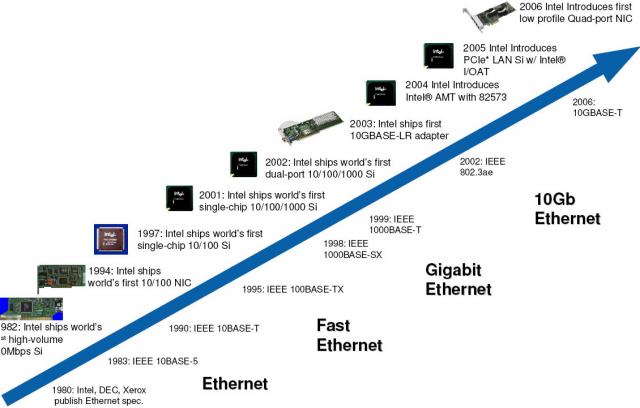
Forty years go on 22 May 1973, Bob Metcalfe, who worked at PARC (www.parc.com), Xerox's legendary Research Centre in Palo Alto at the time, wrote a memo that laid the foundations for a technology that hasn't grown less significant since then.
Ethernet, simple and inexpensive, was the outcome of technological development for the ALOHAnet done at the Universityof Hawaii. The technology Metcalfe worked out was independent of both the signal carrier medium and network topology. This is also the origin of the name that refers to ether (or aether), a light-bearing ?medium for the propagation of electromagnetic waves? that 19th century physicists assumed to exist.
Metcalfe and David Boggs designed and built the first local area network at PARC in 1976. The special coaxial cable could be2.5 kilometreslong (with repeaters at every500 metres), and 256 computers could be connected to it at the most with the help of transceivers attached to the cable. The machines were connected to the central cable, called multidrop cable, which worked at a speed of 2.94 Mb/s.
Ethernet was such a success that in 1978 DEC, Intel and Xerox ?agreed on a common 10Mb/s Ethernet standard, the DIX, which was to become the IEEE 802.3 standard in 1983.
Xerox did not show a great deal of interest in the otherwise successful Ethernet, so Matcalfe established 3Com, his own company, which was acquired by HP in2010 inorder to sell Ethernet interface for PCs. Roughly100 million units have been sold so far.
A great number of companies, such as Cisco, Sun or Novell, were started in the 1980s to manufacture devices for Ethernet-based network systems.
The speed of Ethernet remained at 10Mb/s until the 1990s, but 100 Mb/s and 1Gb/s standards came out in 1992 and 1995 respectively, and finally 10 Gb/s Ethernet was standardised in 2002. Today?s standards work at ?speeds of 40Gb/s and 100 Gb/s.
Ethernet is continuously being used in more and more areas, and it is likely to stay with us for a good while.

